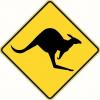Thought I'd post up my results of moving to a 45 degree pitch from a 55 on my #4 smoother.
In American hardwoods working with the standard pitch I was able to reduce tear out over the 55 degree pitch for reasons I did not expect.
In my use of the 55 degree pitch I found that attempting to utilise a very tight setting on the chip breaker was resulting in 'accordian' chips' which indicate an over-tight chip breaker well ahead of the range that was actually considered tight by sources such as David Weaver. The result was that I either needed to take a very light cut or back off the chip breaker, the former was producing a tear-out free cut but was taking forever to actually finish a tabletop.
So I moved to the 45 degree pitch and found that the plane is easier to set and achieve a rolled up chip or one that comes out of the plane mostly curled. No crinkles! I could set the chip breaker to the right number and take a decent cut while maintaining a tear out free finish in American hardwoods. The plane with a tight chip breaker is still easier to push than the high pitch with a looser setting.





 Reply With Quote
Reply With Quote




 Sorry Brian if it sounded like i was suggesting you hadn't tried stuff - that wasn't the intention. I was more flying a kite/suggesting a possible mechanism for what you found. Trying to explain why a steeper pitch on a given wood might just disimprove rather than improve the control of tearout.
Sorry Brian if it sounded like i was suggesting you hadn't tried stuff - that wasn't the intention. I was more flying a kite/suggesting a possible mechanism for what you found. Trying to explain why a steeper pitch on a given wood might just disimprove rather than improve the control of tearout.